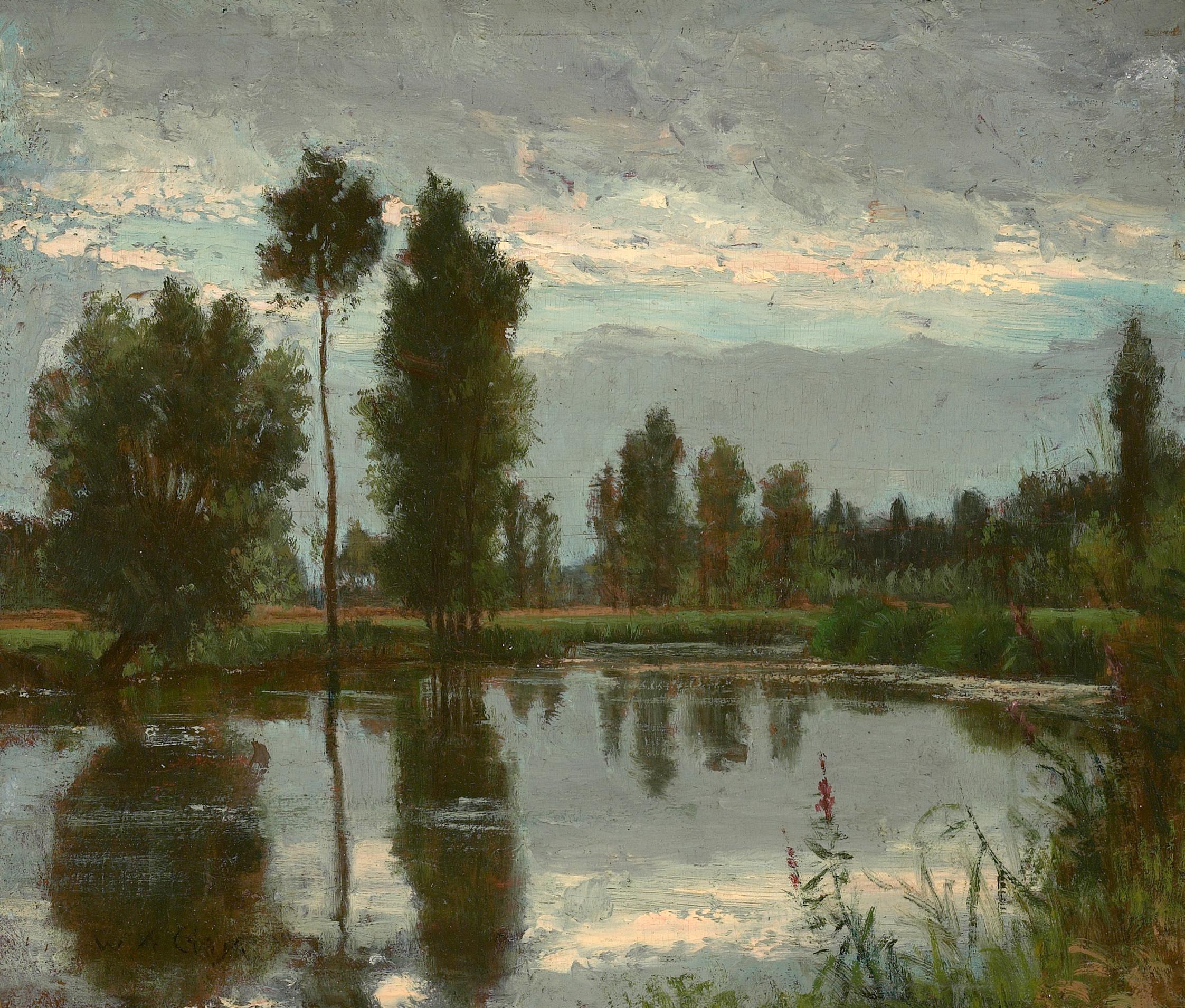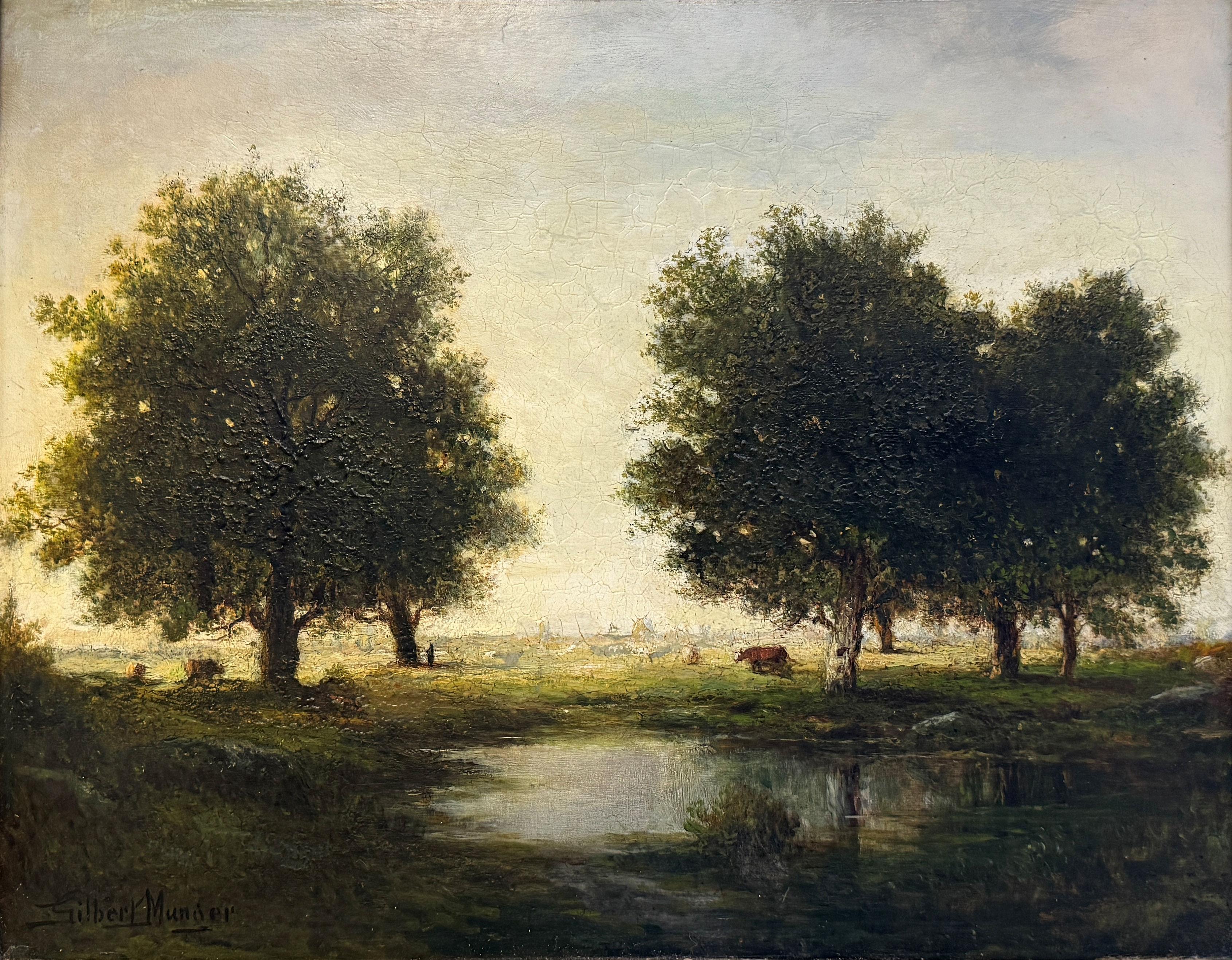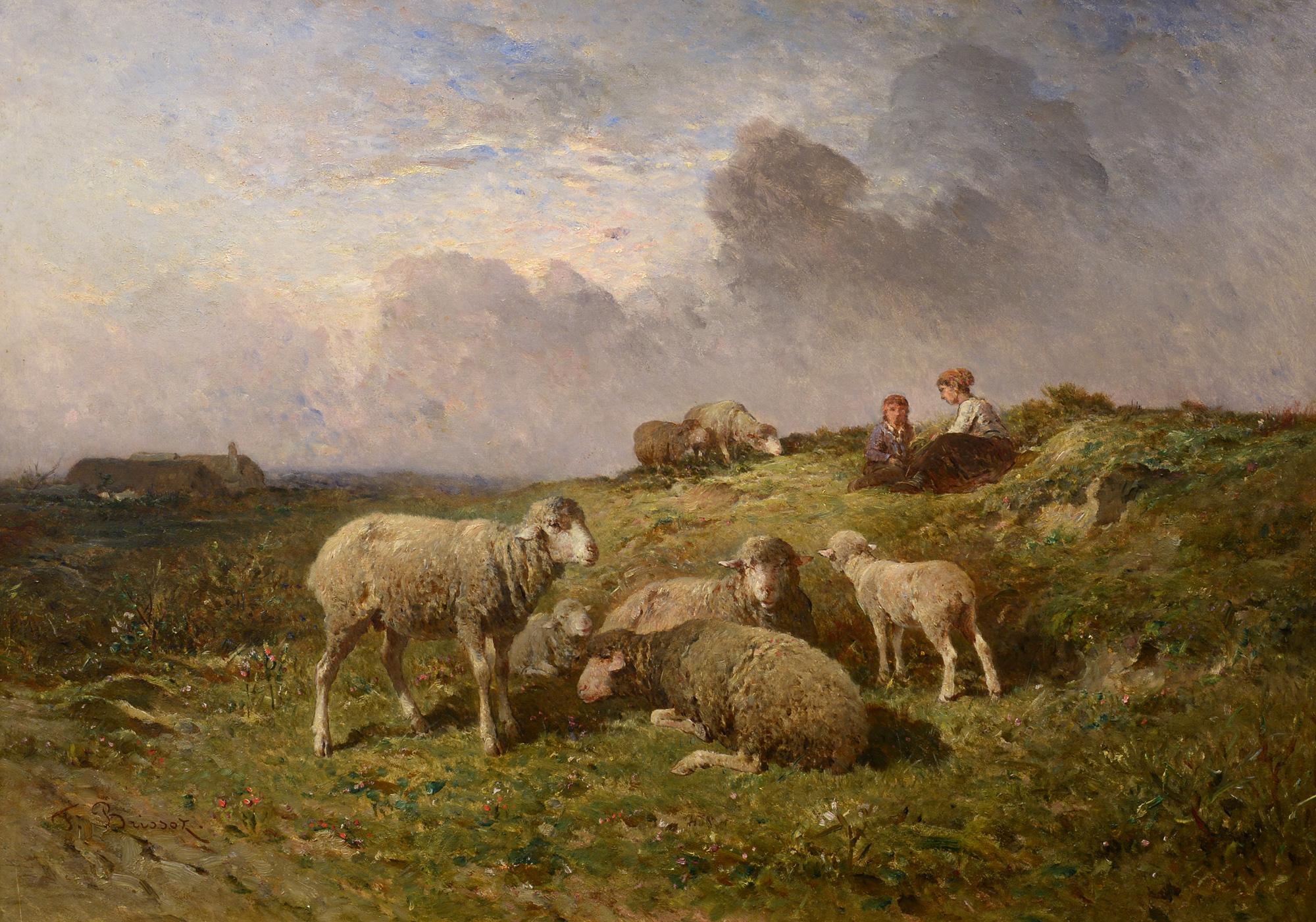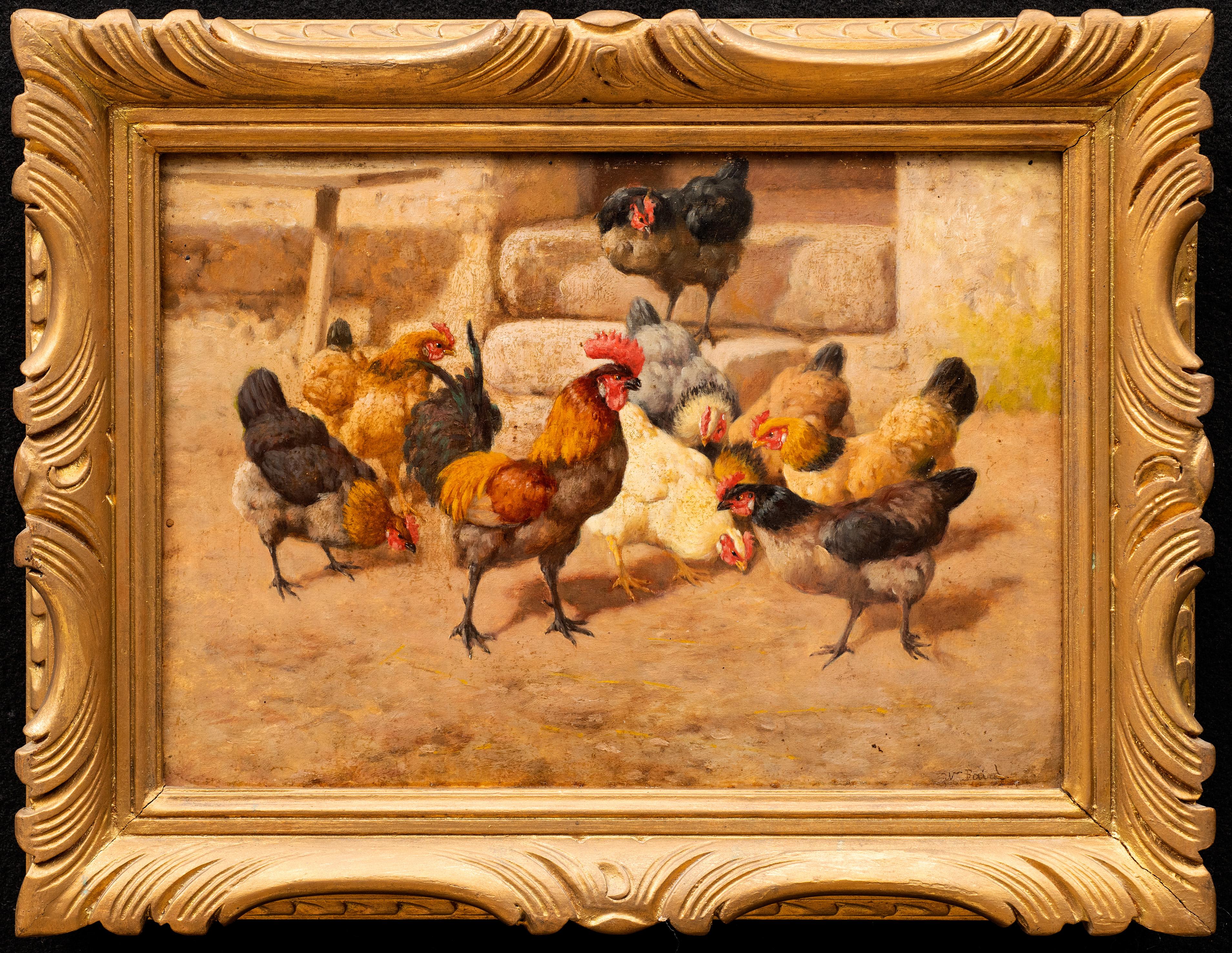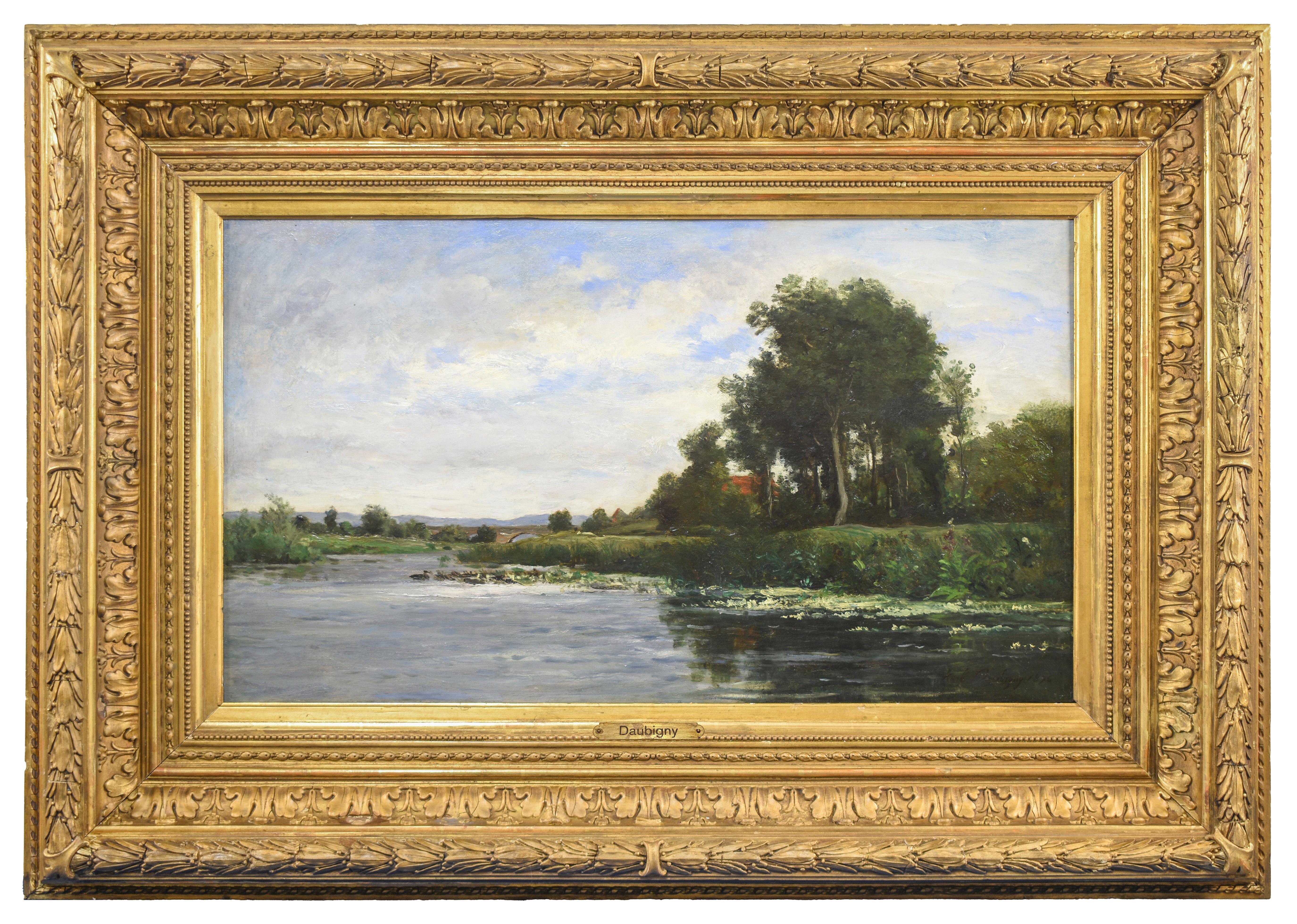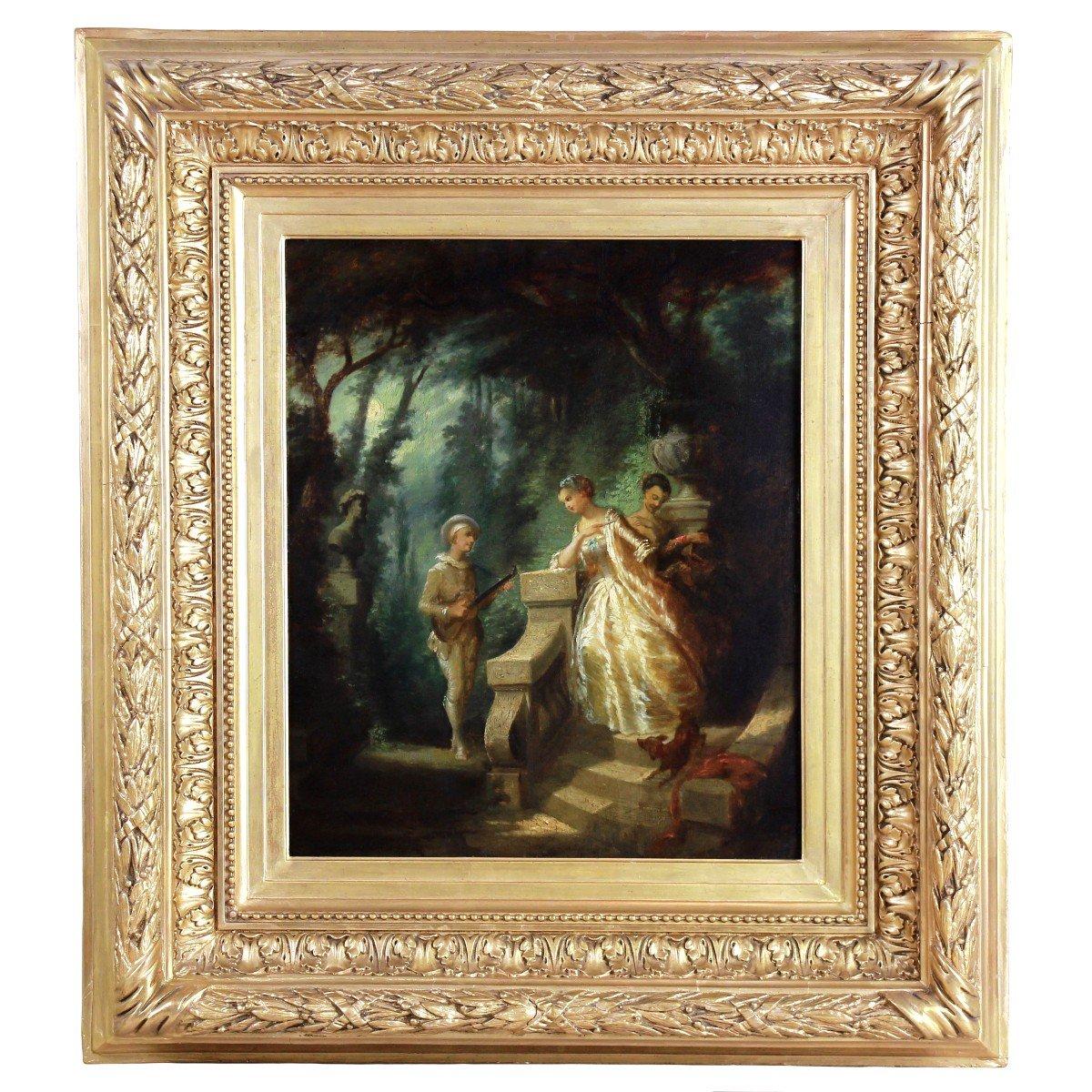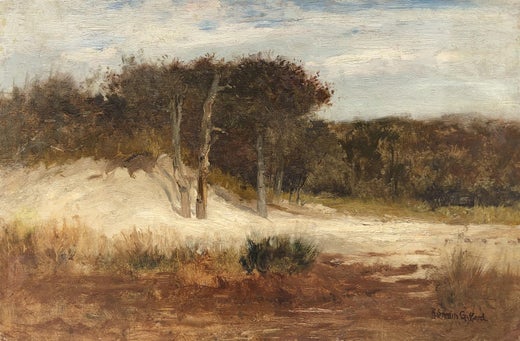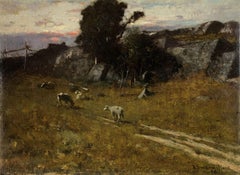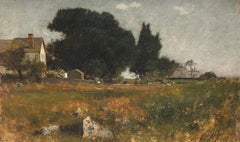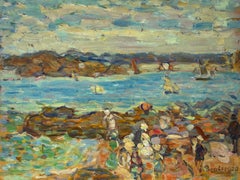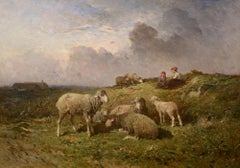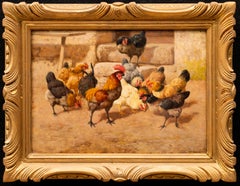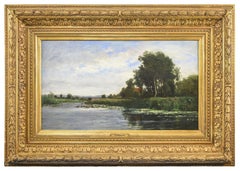Articles similaires à Wooded Sand Dune
Vous voulez plus d'images ou de vidéos ?
Demander au vendeur plus d'images ou de vidéos
1 sur 5
Robert Swain GiffordWooded Sand Dune
À propos de cet article
Wooded Sand Dune
Oil on panel, 12 x 18 1/8 inches
Framed dimensions: 17 1/2 x 23 1/2 inches
Estate stamp lower right: RSwain Gifford
Provenance
The artist;
By descent in the family to the artist's great-grandaughter, until 2023
Born on a small island near Martha's Vineyard, R. Swain Gifford and his family moved to the New Bedford, Massachusetts, area when he was two years old. The Dutch marine painter Albert Van Beest arrived in New Bedford in 1854, providing the teenage Gifford with the opportunity of study; he collaborated with Van Beest on a number of ship pictures and in 1857 accompanied the senior artist when he moved to New York. Nevertheless, Gifford's limited financial resources soon forced him to return to New Bedford. Seven years later he opened a studio in Boston, where he produced romantic marine paintings and views of storm-tossed ships derivative of Van Beest and another New Bedford influence, William Bradford.
By late 1865 Gifford had moved back to New York, and there he befriended the older painter Samuel Colman. They shared interests in watercolor painting and etching and together were instrumental in founding the American Society of Painters in Water Color in 1867 and the New York Etching Club in 1878.
The 1870s were filled with travel for Gifford. He went to the West Coast in 1869 to execute illustrations for the poet William Cullen Bryant's book Picturesque America, visited Europe and North Africa in 1870-71 with Louis Comfort Tiffany, and made a more extensive European and North African sojourn in 1873-75 with his new wife, the artist Frances ("Fanny") Eliot. Gifford's travels abroad had a formative impact: he was exposed to the Oriental subject matter that immediately became a specialty and introduced to the Barbizon landscape style that characterized his later views of the New England coast.
In 1877 Gifford began an affiliation with the Cooper Union schools that lasted until his death; he gradually rose from the position of painting instructor to become art director of all the Cooper Union schools.
In later years Gifford divided his time between New York and a summer home in Nonquitt, Massachusetts. He also traveled extensively, going to Florida, Canada, and Europe, and accompanying the railroad magnate E. H. Harriman on his scientific expedition to Alaska in 1899. Gifford's interest in the relationship of art and science is documented in the Academy's library register; between 1867 and 1895 he checked out books on Goethe's theory of colors, on the anatomy of expression, and on the writings of Leonardo da Vinci.
Although he was an important figure in the Society of American Artists, serving as its vice-president (1878-79) and on its advisory board (1900-1901), Gifford was also devoted to the National Academy. A regular participant in the annual exhibitions from 1863, he also served on the Council from 1886 to 1889 and from 1902 until the year of his death. A memorial exhibition of Gifford's work was organized at the Century Association, New York, in 1905.
- Créateur:Robert Swain Gifford (1840-1905, Américain)
- Dimensions:Hauteur : 30,48 cm (12 po)Largeur : 46,06 cm (18,13 po)
- Support:
- Mouvement et style:
- Période:
- État:Good condition. Scattered inpaint throughout the composition, most prominent in sky.
- Adresse de la galerie:Bryn Mawr, PA
- Numéro de référence:1stDibs : LU2773216436782
Robert Swain Gifford
Robert Swain Gifford (1840-1905) Robert Swain Gifford était un peintre paysagiste américain surtout connu pour ses scènes côtières évocatrices et ses paysages atmosphériques. Il est né le 23 juillet 1840 sur l'île de Naushon, qui fait partie des îles Elizabeth dans le Massachusetts. Vie et formation Gifford déménage avec sa famille à New Bedford, dans le Massachusetts, où il s'intéresse très tôt à l'art. Il commence une formation formelle avec l'artiste néerlandais Albert van Beest, qui a une influence significative sur son style, en particulier pour les sujets marins. Voyages et influence Le développement artistique de Gifford a été profondément marqué par de nombreux voyages :
Dans les années 1860, il visite la Californie et peint ses côtes escarpées. Il a également voyagé en Europe, en Afrique du Nord et au Moyen-Orient, produisant des œuvres inspirées par des paysages exotiques et arides, qui le distinguent de nombre de ses contemporains. Style et héritage Le travail de Lumin mêle luminisme et tonalisme, se concentrant sur l'ambiance, la lumière et l'atmosphère plutôt que sur les détails complexes. Il a peint à la fois à l'huile et à l'aquarelle, capturant souvent des scènes tranquilles et méditatives de marais, de ports et de déserts. Son art reflète une fascination pour la lumière naturelle et les variations subtiles de tons, et il était particulièrement doué pour dépeindre des paysages marins brumeux et des vues côtières éloignées. Faits marquants de sa carrière Élu académicien à part entière à la National Academy of Design en 1867.
Exposé régulièrement dans des institutions majeures, dont le Boston Art Club, la Pennsylvania Academy of the Fine Arts et le Metropolitan Museum of Art.
A reçu une médaille à l'Exposition Universelle de Paris en 1889. Décès et reconnaissance Gifford est décédé en 1905 à New York. Aujourd'hui, ses œuvres sont conservées dans des collections prestigieuses, notamment : Le Metropolitan Museum of Art Le Smithsonian American Art Museum
Le musée des beaux-arts de Boston
À propos du vendeur
Aucune évaluation pour le moment
Vendeur reconnu
Ces vendeurs prestigieux sont des leaders du secteur. Ils représentent le summum en matière de qualité et de design.
Établi en 2001
Vendeur 1stDibs depuis 2024
Temps de réponse habituel : 1 heure
- ExpéditionRecherche du devis...Expédition depuis : Bryn Mawr, PA
- Politique des retours
Certaines parties de cette page ont été traduites automatiquement. 1stDibs ne garantit pas l'exactitude des traductions. L'anglais est la langue par défaut de ce site web.
Garantie d'authenticité
Bien qu'il soit peu probable que la situation se présente, dans le cas où vous rencontreriez un problème d'authenticité d'un article, contactez-nous dans un délai d'un an pour obtenir un remboursement intégral. DétailsGarantie de remboursement
Si votre article n'est pas conforme à la description, est endommagé pendant le transport ou ne vous est pas livré, contactez-nous sous 7 jours pour obtenir un remboursement intégral. DétailsAnnulation sous 24 heures
Vous disposez d'un délai de 24 heures pour annuler votre achat sans motif.Des vendeurs professionnels agréés
Nos vendeurs de renommée mondiale doivent respecter des normes strictes en matière de service et de qualité, afin de préserver l'intégrité de nos fiches produit.Garantie d'alignement des prix
Si vous constatez qu'un autre vendeur a mis en vente le même article à un prix inférieur sur un autre site, nous nous alignerons sur ce prix.Livraison en toute confiance à l'international
Notre réseau de transporteurs de premier ordre propose des options d'expédition spécialisées dans le monde entier, y compris des livraisons personnalisées.Plus d'articles de ce vendeur
Tout afficherGrez-sur-Loing
La palette sombre et fumée de Grez-sur-Loing reflète l'influence de l'école française de Barbizon sur le style de peinture de Winkworth Allan Gay. Il semble raisonnable de supposer q...
Catégorie
Fin du XIXe siècle, École de Barbizon, Peintures - Paysage
Matériaux
Huile, Panneau en bois
14 500 $US
Paysage du soir
Par Robert Swain Gifford
Né sur une petite île près de Martha's Vineyard, R. Swain Gifford et sa famille ont déménagé dans la région de New Bedford, dans le Massachusetts, lorsqu'il avait deux ans. Le peintr...
Catégorie
années 1880, École de Barbizon, Peintures - Paysage
Matériaux
Toile, Huile
Ferme de Nouvelle-Angleterre
Par Robert Swain Gifford
Provenance
L'artiste ;
Par descendance dans la famille jusqu'à l'arrière-petite-fille de l'artiste, jusqu'en 2023.
Né sur une petite île près de Martha's Vineyard, R. Swain Gifford ...
Catégorie
Fin du XIXe siècle, École de Barbizon, Peintures - Paysage
Matériaux
Toile, Huile
Études St. Malo
Provenance
L'Artistics ;
Charles Prendergast (acquis en 1924) ;
Mme Charles Prendergast (puis, par filiation, en 1948) ;
Kraushaar Galleries, New York ;
M. et Mme Julius Jacobson ...
Catégorie
Début des années 1900, Post-impressionnisme, Peintures - Paysage
Matériaux
Huile, Panneau en bois
Le long du chemin
Stanley Reckless a commencé sa formation artistique à l'Académie des beaux-arts de Pennsylvanie en 1913. Il a étudié avec Daniel Garber et a été très influencé par l'approche lyrique...
Catégorie
Début du 20ème siècle, Autres styles artistiques, Peintures - Paysage
Matériaux
Huile, Panneau
Tournesols 1
Peter Rudolph est né à New York en 1946. Il a obtenu une licence en beaux-arts à la Tyler School of Art et une maîtrise en beaux-arts à l'université de Pennsylvanie. Peter a enseigné...
Catégorie
années 2010, Contemporain, Peintures - Paysage
Matériaux
Huile, Panneau
5 750 $US
Suggestions
"Près de Bourron, France" Gilbert Munger, école de Barbizon, paysage de campagne
Gilbert Munger
Près de Bourron, France, vers 1886
Signé en bas à gauche
Huile sur panneau
13 x 18 pouces
Gilbert Munger est né le 14 avril 1837 à Madison, Connecticut. Très tôt, il...
Catégorie
années 1880, École de Barbizon, Peintures - Figuratif
Matériaux
Huile, Panneau en bois
Pasture d'été de l'école de Barbizon, moutons, bergers, paysage
Felix Saturnin Brissot de Warville, dans le style de l'école de Barbizon, a régulièrement capturé des scènes de la campagne française et des personnes qui y vivaient et y travaillaie...
Catégorie
XIXe siècle, École de Barbizon, Peintures - Paysage
Matériaux
Huile, Panneau en bois
Coq et poules dans la basse-cour William Baptiste Baird (S.S./France 1847-1917)
Coq et poules dans la basse-cour
William Baptiste Baird (États-Unis/France 1847-1917)
Huile sur panneau
Signé en bas à droite "W. Baird"
12 1/4 x 9 pouces
Un superbe exemple de la...
Catégorie
années 1880, École de Barbizon, Peintures - Animaux
Matériaux
Huile, Panneau en bois
Paysage de Barbizon d'une bordure de rivière
Par Karl Daubigny
État impeccable.
Catégorie
XIXe siècle, École de Barbizon, Peintures - Paysage
Matériaux
Huile, Panneau en bois
Huile sur panneau « Scène Galante » attribuée à Diaz De La Pena 19ème siècle
Huile sur panneau « Scène Galante » attribuée à Diaz De La Pena 19ème siècle
Du point de vue du style et de la composition, elle peut certainement être comparée à d'autres œuvres connues de Narcisse Virgile Diaz De La Pena.
Traitement comparable du travail au pinceau et de la caractérisation des visages et de la composition.
Informations complémentaires :
Titre : une scene galante
Le style :
Médium : huile sur panneau
Signature : non signée
Collectional : collection privée Paris
Dimensions du panneau : 38 cm x 46 cm
Dimensions encadrées : 66 cm x 73 cm
Condit : Restauré par notre atelier
Artistics : Attr. à Narcisse Virgile DIAZ DE LA PENA
L'école : École Barbizon...
Catégorie
années 1860, École de Barbizon, Peintures - Figuratif
Matériaux
Huile, Panneau
Coucher de soleil, quai des Esclavons par Félix Ziem
Par Félix Ziem
Félix-François Georges Ziem
1821-1911 Français
Coucher de soleil, quai des Esclavons
(Coucher de soleil, quai des Esclavons)
Signé "Ziem" (en bas à droite)
Huile sur panneau
Veni...
Catégorie
XIXe siècle, École de Barbizon, Peintures - Paysage
Matériaux
Huile, Panneau
